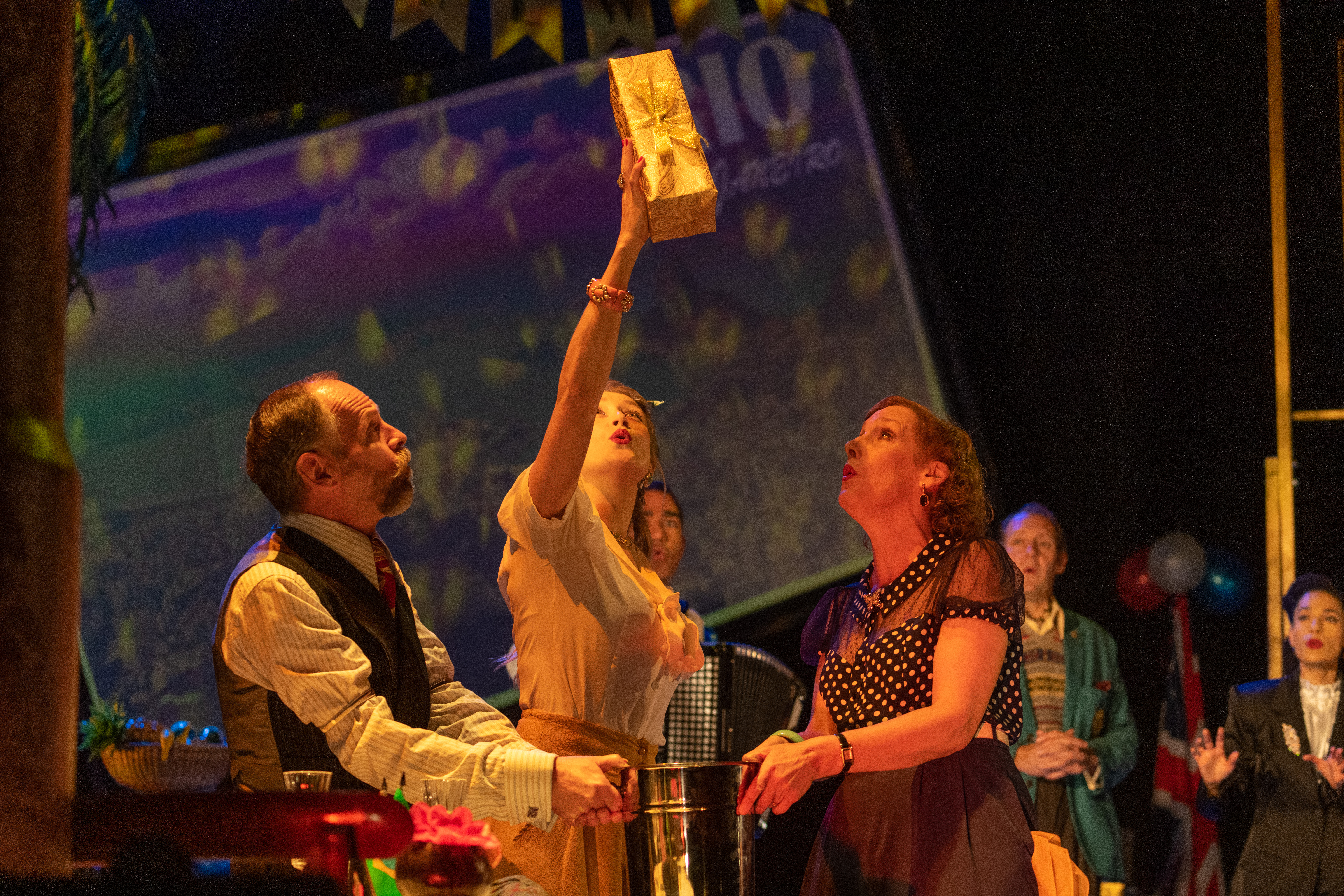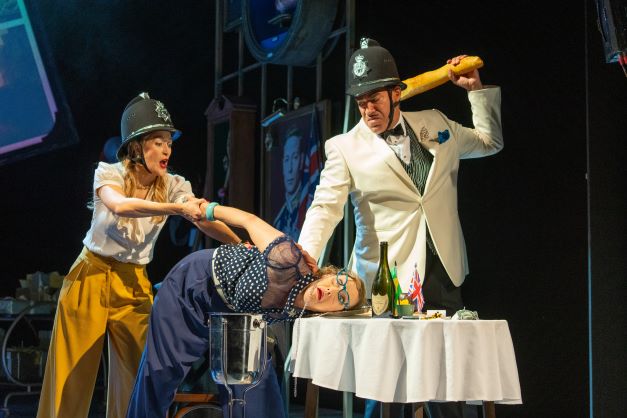
13 – 22 October
As a child growing up in the 1970s, I have vivid memories of autumnal and wintry Sunday afternoons spent watching classic films on our small Sony Trinitron television with the rest of my family: “The Sound of Music”, “The Great Escape”, “The Wizard of Oz”, “The Bridge on the River Kwai”, to name but a few. And – of course – the Ealing comedies with – of course – the irrepressible Sir Alec Guinness. These comedy classics of the post-war British film industry are much-loved and highly influential films, presaging Hitchcock’s “Vertigo” and Peter Collinson’s “The Italian Job”, as well as countless other crime capers. So it was with much excitement and anticipation that I arrived at Cheltenham’s beautiful Everyman Theatre this week to see director Jeremy Sams’ and writer Phil Porter’s rendering of what the British Film Institute calls “the 17th best British film of all time.” No pressure, then….
Miles Jupp has similarly fond memories of watching the Ealing comedies as a child – “They’re great fun films,” he opined recently – which perhaps accounts for his enthusiastic, skilful and very funny performance as Henry Holland, the most unlikely and unassuming bank robber in the history of cinematic crime. Jupp excels in the role of the “non-entity bank clerk” turned criminal mastermind, showcasing his versatility as a comic character actor through his timing, delivery and use of physical theatre; however, he is more than ably abetted by the reliable Justin Edwards as Pendlebury, his partner-in-crime, and a strong supporting cast. Whereas female actors in the 1950s were often consigned to minor roles or simple love interests, it is refreshing to see Tessa Churchard and Victoria Blunt enthusiastically hamming it up as Lackery Wood and Shorty Fisher, roles originally played by Sid James and Alfie Bass in the 1951 film.
This a free-wheeling, funny and fast-paced crime caper. Porter’s witty and well-adapted script allows the full cast to be on stage throughout almost the entire piece, with the supporting cast interchanging smoothly between several roles. The staging is effectively done, with a variety of locations in both Paris and London cleverly brought to life with the aid of revolving, mobile staging and an animated postcard-style screen which should, perhaps, have formed more of the backdrop in order to maximise its dramatic impact. The Eiffel Tower, such a key location in the film, is imaginatively realised, although surely more could have been made of the film’s iconic, dramatic car chase scene through the streets of London, which is rather underwhelming in this production.
The bank-heist genre is currently enjoying something of a renaissance: there is something both endearing and enduring about seeing roguish but likeable “bad guys” win. “The Lavender Hill Mob” is all set to thrill and amuse a new generation of fans with its wisecracking wit and charm. And if it also helps the Ealing comedies to maintain their rightful place in the pantheon of great British films, then this will be a well-deserved bonus.
I urge you to pursue “The Lavender Hill Mob”. It would be a crime to miss it.
★★★★☆ Tony Clarke 19 October
photographer’s credit; Callum Heinrich


